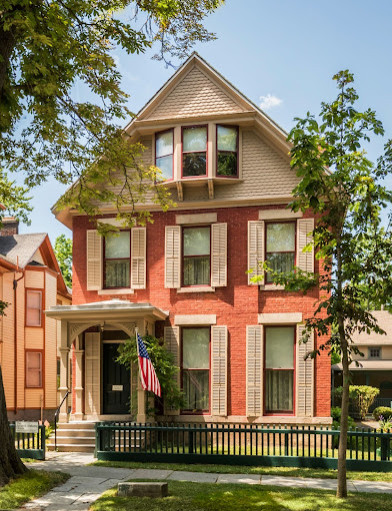A Legacy Reimagined: Susan B. Anthony's Home Set to Expand with Bold New Vision

In its 80th year as a museum, the National Susan B. Anthony Museum & House stands not only as a preserved landmark but as a living symbol of activism, reflection, and transformation. Located in the heart of Rochester's historic district, this unique campus of four buildings has long welcomed those seeking a connection to one of the most influential figures in American history. Now, in a transformative new chapter, the institution is preparing for a future that both honors Anthony's legacy and extends her reach to new generations.
"Our visitors don't just come to see a house, they come on a kind of pilgrimage," says Deborah L. Hughes, President & CEO of the Museum & House. "It's about the meaning behind it, the ideas Susan B. Anthony wrestled with that still echo today."
Founded in 1945, the Museum began as a small effort to preserve Anthony's former home, a National Historic Landmark. Over time, the institution grew to include her sister's adjacent home (now a visitor center), a Queen Anne-style house across the street that functions as administrative offices, and a modest structure built in the 1990s for classes. All four buildings sit along Madison Street, the very road Anthony once walked, within a preserved historic neighborhood.
But as interest in Anthony's story has increased, and as the questions she asked about equality, justice, and civic participation remain urgent, the limitations of the current site have become more pressing. The home itself, able to accommodate just 35 visitors at a time, often has to manage visitor timings during high-volume seasons. "When a bus arrives," Hughes explains, "we have to divide visitors into groups and close the house for hours at a time just to manage the flow."
That's why the organization is now planning a major expansion, an effort more than a decade in the making, that promises to reshape the visitor experience. Set just 900 feet from the current campus, the forthcoming 14,000-square-foot facility will allow the Museum to drastically increase its capacity.
This new facility will serve as a dynamic, self-guided exhibition space rich in multimedia, language accessibility, and interactive elements. Designed for everyone from schoolchildren to global travelers, the center will house immersive audiovisual exhibits that bring 19th-century activism to life, connecting Anthony's story to modern movements for social change.
"Susan B. Anthony was not just a suffragist. She was a global thinker, a strategist, a media pioneer," Hughes says. "She founded press offices, helped organize international councils for women, and stood at the intersection of abolition, education, labor, and fairness. Her influence went far beyond what most textbooks tell us."
One of the most exciting components of the new building is a wing dedicated to artifact conservation and research. For the first time, scholars and students will be granted structured access to the Museum's vast and largely untapped collection. From original newspapers and documents to personal effects collected over 80 years, this material, much of it unstudied, offers fresh windows into the lived history of women's rights.
"We are hoping this becomes a hub for discovery," says Hughes. "With five colleges nearby offering museum studies programs, we are creating a place where students can engage in hands-on research and open up new chapters of history that have not yet been written."
The new facility, Hughes emphasizes, is more than just a building. It's a vision to activate and uplift the surrounding neighborhood, create accessible educational opportunities, and transform the Museum into an international destination. "Susan B. Anthony lived here. She didn't just sleep here," Hughes says. "The activism started on this street. We want to reflect that engagement in every inch of this new space."
Plans are in motion to break ground in 2026, with an eye toward opening the doors in 2027 or 2028.
The significance of the timing is not lost on those leading the effort. As the U.S. enters an era of renewed cultural introspection, the legacy of Susan B. Anthony feels more relevant than ever. "Sometimes her story is reduced to a slogan or a celebration," Hughes reflects. "But she grappled with the same kinds of existential questions we do now, about fairness, equity, and what we owe each other."
The house even served as an early voting site. "Everywhere I go, people say, 'I got to vote there,'" Hughes shares. "That tells me this place still means something real to people."
It's in those everyday actions, visiting, learning, and voting, that the Museum fulfills its most profound purpose. "Susan B. Anthony believed that if we trusted in the best of humanity," Hughes says, "we could build the most compassionate society for the future."
And that future, she adds, starts with remembering the past, and giving it room to grow.
© Copyright IBTimes 2024. All rights reserved.




















